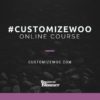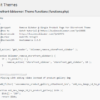
If you’re looking to start your own ecommerce store, no platform does it better than WooCommerce.
WooCommerce is your path to online selling success. It’s a flexible, open-source e-commerce plugin specifically built for WordPress websites.
From setting up and customizing your shop, to mastering orders and sales tracking, this complete guide will walk you through becoming an accomplished WooCommerce expert.
Read on for all the info you need to get the ball rolling!
- Understanding WooCommerce Basics [BEGINNER]
- Setting up a WooCommerce Store [BEGINNER]
- WooCommerce Website Design Tips [BEGINNER]
- Customizing WooCommerce Features [INTERMEDIATE]
- Cracking Product Management [INTERMEDIATE]
- Mastering Orders and Sales Tracking [INTERMEDIATE]
- Optimizing Your Store for Conversions [ADVANCED]
- Beyond the Basics: Expert WooCommerce Tactics [ADVANCED]
- Conclusion
Understanding WooCommerce Basics [BEGINNER]
This brief insight should give you an idea why many entrepreneurs prefer running their shops via WooCommerce. Let’s dig into WooCommerce primary characteristics:
- User-Friendliness: If you’re acquainted with WordPress, mastering WooCommerce will be a breeze, as they share the same user interface.
- High Scalability: Whether you’re starting off small or running a full-scale enterprise, WooCommerce adjusts as your business expands, and offers room for growth.
- Wide Customizability: With thousands of plugins and themes available, each element can be tailored according to your needs.
When comparing it with other ecommerce platforms like Magento or Shopify, two aspects push WooCommerce ahead in the game:
- Ease of Use: Its integration with WordPress makes it easier to manage both website content and product catalog from one place.
- Cost Effectiveness: WooCommerce is free to use while most add-ons are priced reasonably compared to similar features on rival platforms.
Setting up a WooCommerce Store [BEGINNER]
Setting up your WooCommerce store can be summarized into 5 basic steps:
- Install WordPress: Your WordPress-friendly hosting should give you a 1-click installer
- Pick a WooCommerce-friendly theme: Storefront is a great one, otherwise these are the fastest WooCommerce themes
- Install WooCommerce: Head over to the Plugins section of the WordPress dashboard. Search for ‘WooCommerce’, install it and activate it.
- Add Product Details: Now it’s time to populate your online shop. From the dashboard navigate to Products > Add New. Add product names, descriptions, prices, images and data.
- Define Shipping & Payment Methods: You can’t go live unless you have defined at least one payment method (I use PayPal and Stripe) and some basic shipping rates (in case you sell physical products).
Setting up is just half the battle, and you need to maintain its design aesthetics with user experience in mind to keep customers hooked.
WooCommerce Website Design Tips [BEGINNER]
Design can be a make-or-break aspect for your online store. A well-designed user-friendly interface can provide an excellent customer experience, helping to boost sales and conversions.
Consider the following rules:
- Engaging Landing Pages: This ensures your homepage and product pages grab attention and encourages browsing and purchasing.
- Quality Product Images: Poor images = poor trust in what you sell.
- Intuitive Navigation: Help shoppers reach desired items effortlessly with clear, organized menus.
Further points that enhance overall quality:
- Mobile Compatibility: In today’s tech era, ensuring website responsiveness on various mobile devices ensures no visitor bounces back due to poor usability.
- Speedy Loading: No one likes waiting! Optimize all elements contributing towards faster page load times, such as image sizes and effective caching methods.
Good design practices are about appealing aesthetics coupled with stellar performance. If you’ve ever shopped online yourself, you should have a sense of what it takes to get this right.
Customizing WooCommerce Features [INTERMEDIATE]
WooCommerce comes packed with a plethora of features that you can customize for tailoring your e-store just the way you want it to be.
You can do so by installing additional free or premium WordPress plugins. From specific payment gateways to social media integration, from sales and marketing to invoicing and reporting, pick those tools that suit your business.
The most important page of an ecommerce store is the Checkout one. Consider using a custom Checkout page layout to reduce cart abandonment and maximize your average order value.
Customization should ideally echo business goals while facilitating buyers’ purchase journey effectively, so don’t skip over this step.
Cracking Product Management [INTERMEDIATE]
Efficient product management is key in maintaining a smooth-running professional WooCommerce store. With WooCommerce you get:
- Inventory Procedures: WooCommerce provides straightforward ways to add, remove or modify products as well as their related details like prices and stock levels.
- Price Manipulation: With this platform, you’ll find flexible options for regular pricing, sale pricing and even arrange discount dates when necessary.
- Products categorization: You can group your merchandise under relevant categories and tags so customers can find what they’re looking for swiftly.
- Product Variations: You can introduce variations like size or color within one product title making it all the more easier for user selections.
Effective product management ensures visitors enjoy undisrupted shopping experiences which translates into successful conversions down the line.
Mastering Orders and Sales Tracking [INTERMEDIATE]
Handling orders effectively and efficiently tracking sales is an integral part of ecommerce success. WooCommerce comes with basic admin functionalities:
- Order Processing: WooCommerce allows you to check, process, and update order statuses easily for smooth business operations.
- Sales Reports: Get access to insightful chart-based sales reports right from your WooCommerce dashboard that help highlight performance trends over time.
- Email Marketing: WooCommerce allows you to send order receipts based on the order status. You can edit subjects and enable/disable them based on your needs.
Once you’ve mastered that, it’s up to you to skill up on the “missing” features. Processing orders, generating reports and emailing customers is easy, but what if you need special functionalities that are required by the business model?
And that’s when you turn from [INTERMEDIATE] to [ADVANCED]. At this stage, you know WooCommerce inside out, but also know the additional tools you can install (i.e. plugins) in order to build a proper sales system.
Think of email marketing. Transactional emails are nice, but what about capturing email addresses during the purchase journey, and then nurturing them through well-thought out campaigns?
See how things can get more complex? This step is the most difficult one. And if you’re looking to upskill as you run a WooCommerce store as a side hustle, checking out business strategy & analysis resume examples could inspire you to work towards your next career move.
Optimizing Your Store for Conversions [ADVANCED]
A well-optimized WooCommerce store is more likely to drive successful conversions. Think about:
- SEO: Effective use of keywords in product descriptions, titles and alt-tags helps improve visibility on search engines, driving organic traffic your way.
- Social Proof: Encourage satisfied customers to leave reviews. These testimonials can nudge indecisive visitors towards a purchase decision.
Further tips that matter:
- Easy Checkout Process: Significantly lessen shopping cart abandonment with a streamlined and user-friendly checkout flow.
- Regular Deals or Promotions: Keep customer interest alive by offering regular deals/promos which often lead up to swift purchases.
Optimization doesn’t end here. It’s an ongoing process as market trends evolve, but mastering the core tenets is sensible.
Beyond the Basics: Expert WooCommerce Tactics [ADVANCED]
Once you’re comfortable with basic functionalities, it’s worth exploring advanced WooCommerce features to fully leverage both the efficiency and professionalism of your store. Options include:
- Automated Shipping Calculators: Save customers from surprise shipping costs at checkout stage by integrating real-time shipping cost calculators.
- Multilingual Support: Cater to global audiences more effectively by providing multilingual support on your online store.
- Intuitive Search Features: With Ajax product search predictions, users can find exactly what they’re looking for without much navigation.
- and more…
It’s a good idea to include these elements as needed, rather than going all-in immediately. That way you’ll grow your skills and knowledge sustainably, as opposed to being overwhelmed.
Being a WooCommerce expert also requires some coding skills – because not everything can be obtained with a plugin. So, in this other post “WooCommerce: How To Become an Advanced Developer?“, I share my top 5 steps to mastering WooCommerce as a developer:
- Building your WooCommerce Foundation
- Reverse-engineering the WooCommerce Plugin
- Handling WooCommerce Customization
- Understanding WooCommerce Integration
- Mastering WooCommerce Troubleshooting
Conclusion
By combining what we’ve seen in this post and the advanced developer tips, your ambitions of becoming a WooCommerce expert are definitely achievable, and the outline of what’s involved will be a good framework to get you started.
A lot of learning will happen at the moment, so launching a site and gaining experience on the job is arguably the best way to go about it. Don’t hold back!





